Key takeaways
- Character-building exercises foster growth in qualities like empathy, resilience, and integrity through intentional reflection and vulnerability.
- For activist teachers, these exercises enhance teaching effectiveness and help sustain emotional commitment, creating a supportive community among educators.
- Effective planning and implementation, including clear intentions and adequate pacing, are essential for maximizing the impact of character-building activities in the classroom.
- Ongoing reflection and seeking feedback are vital for personal growth, enabling deeper understanding and fostering trust within communities.
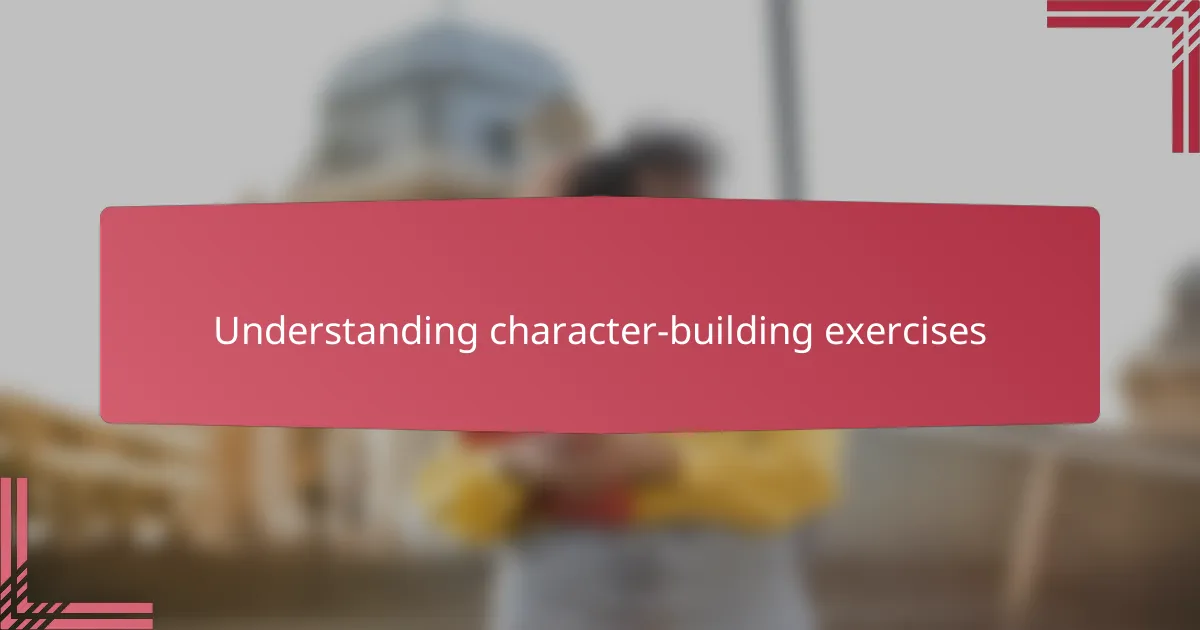
Understanding character-building exercises
Character-building exercises, in my experience, are more than just tasks; they’re intentional activities designed to develop qualities like empathy, resilience, and integrity. I’ve found that these exercises often challenge us to reflect deeply on our values and choices, which can be uncomfortable but ultimately rewarding. Have you ever noticed how a simple group discussion or role-play suddenly reveals a side of yourself you hadn’t recognized before?
What truly struck me was how these exercises don’t just teach character—they invite real growth by encouraging honesty and vulnerability. I recall one particular activity where sharing personal stories led to a powerful sense of trust and understanding among my peers. It made me realize that character-building isn’t about perfection but about embracing our flaws and learning from them.
Do we always appreciate the subtle power behind these exercises? Sometimes, their impact isn’t immediate but unfolds over time, influencing how we respond to challenges. Looking back, I see how these moments quietly shaped my approach to activism and teaching, making me more thoughtful and intentional in my actions.
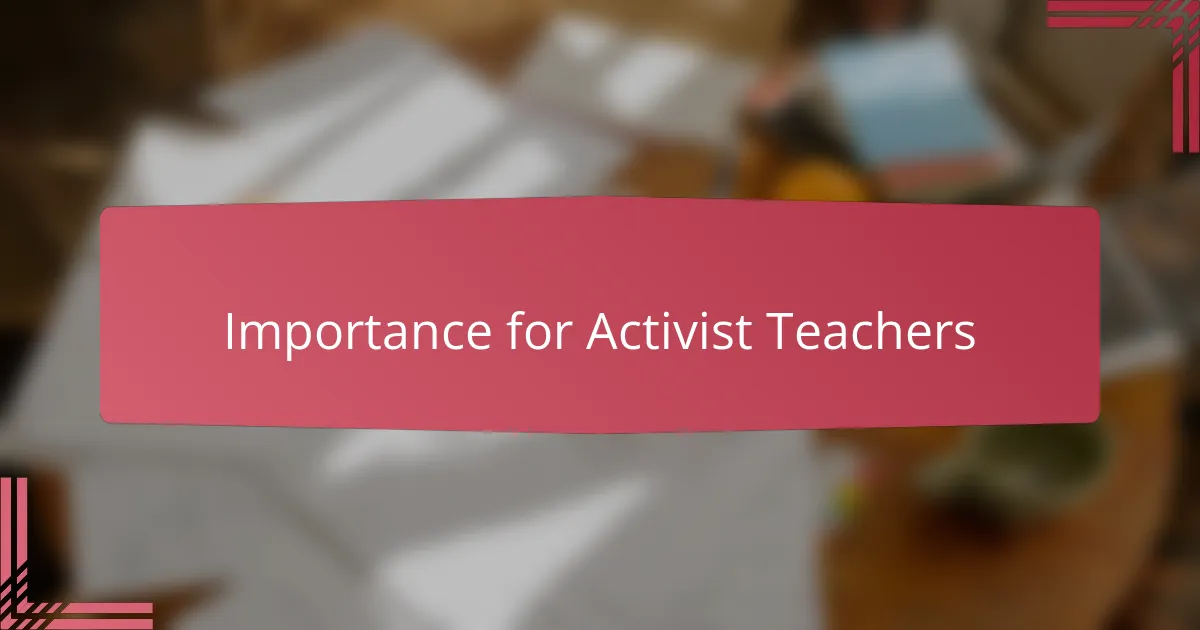
Importance for activist teachers
For activist teachers, character-building exercises are essential because they cultivate the very values we strive to inspire in our students. I remember feeling more grounded and purposeful after a session that pushed me to confront my own biases; it was a turning point in how I approached classroom discussions on justice. Have you ever noticed how modeling resilience or empathy can transform not only your teaching but also your activism?
These exercises help us stay connected to our mission when the work feels overwhelming. I’ve found that regularly engaging in character-building practices replenishes my emotional reserves, preventing burnout and keeping my commitment alive. Isn’t it fascinating how strengthening our own character directly amplifies our effectiveness as agents of change?
What stands out most to me is how these exercises build community among activist teachers. When we openly share our struggles and growth, we create a support network that sustains both personal and collective activism. Reflecting on these moments, I realize that character-building isn’t just a personal journey—it’s a vital foundation for collaborative, resilient movements.
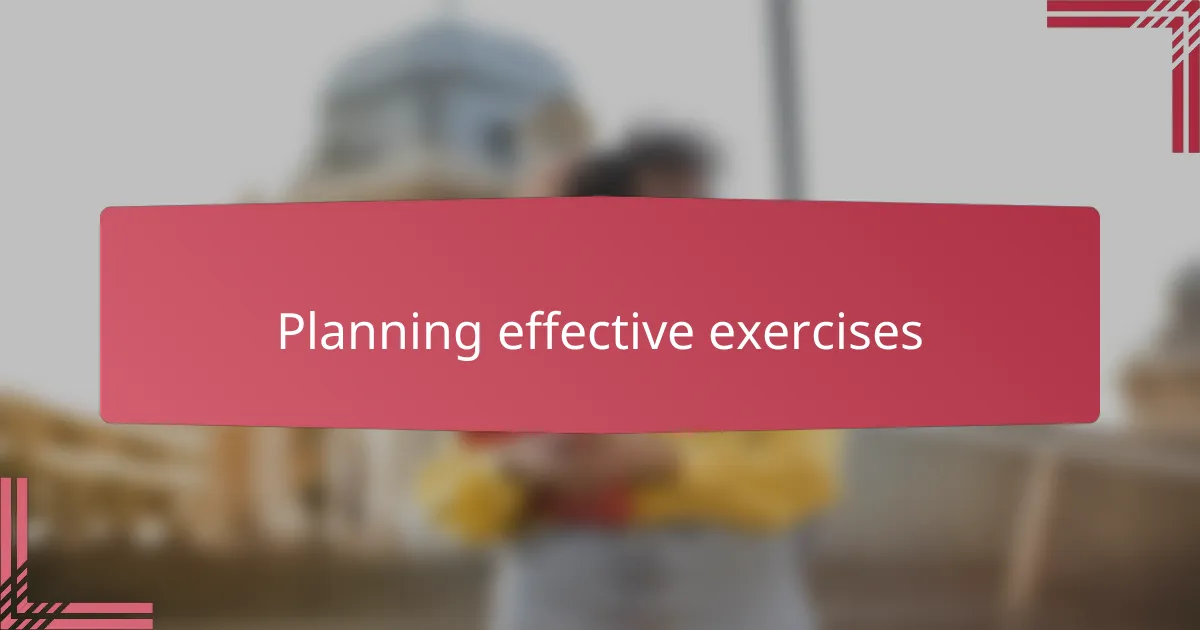
Planning effective exercises
When I plan character-building exercises, I always start by considering the specific qualities I want to nurture. Do I want to focus on empathy, resilience, or perhaps integrity? Tailoring the activity to these goals makes the experience more meaningful and focused. Over time, I’ve learned that vague exercises tend to lose impact, so clarity in purpose feels crucial.
I also pay close attention to the group dynamics before designing the exercise. Have you ever noticed how some activities work wonders with one group but fall flat with another? That’s why I try to anticipate reactions and adapt accordingly, ensuring everyone feels safe to engage honestly. Creating this kind of environment requires planning but makes all the difference.
Finally, I always build in moments for reflection after the exercise. From my experience, it’s during these quiet times that real insight and growth happen. Asking questions like “What did this reveal about me?” or “How can I carry this forward?” helps participants connect the exercise to their own lives, making character-building much more than just a task.
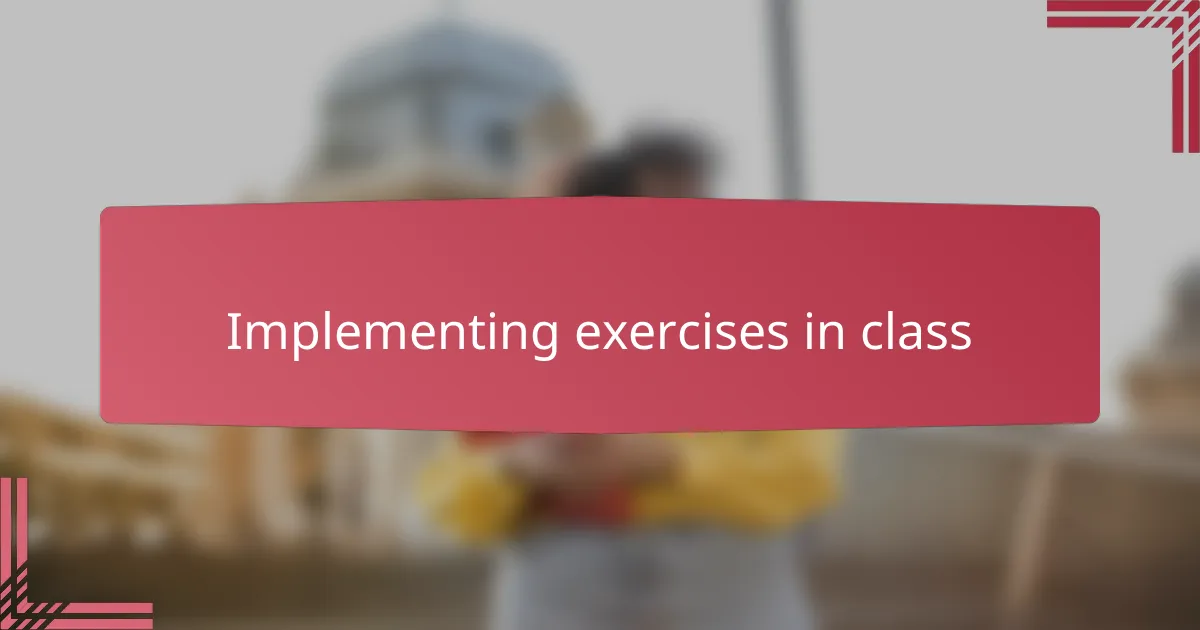
Implementing exercises in class
Implementing character-building exercises in class often feels like walking a tightrope between challenge and support. I’ve noticed that when I introduce these activities, setting a clear intention at the start—explaining why we’re doing them—helps students lower their guard. Have you ever felt the shift in energy when a class begins to embrace vulnerability rather than resist it? That moment is where real learning begins.
I also learned that timing is everything. Introducing too many exercises too quickly can overwhelm the group, while spacing them out allows for deeper reflection and connection. One time, after a particularly intense session, I noticed some students needed extra space to process, so I followed up with smaller, informal check-ins to keep the momentum going without pressure.
Another insight from my experience is the power of debriefing. I always end exercises by inviting open dialogue—sometimes with guiding questions, sometimes just letting the conversation flow naturally. It’s in those discussions that I see transformation happening, as students articulate what they’ve discovered about themselves and each other. Isn’t it amazing how a few honest words can build trust that lasts beyond the classroom?
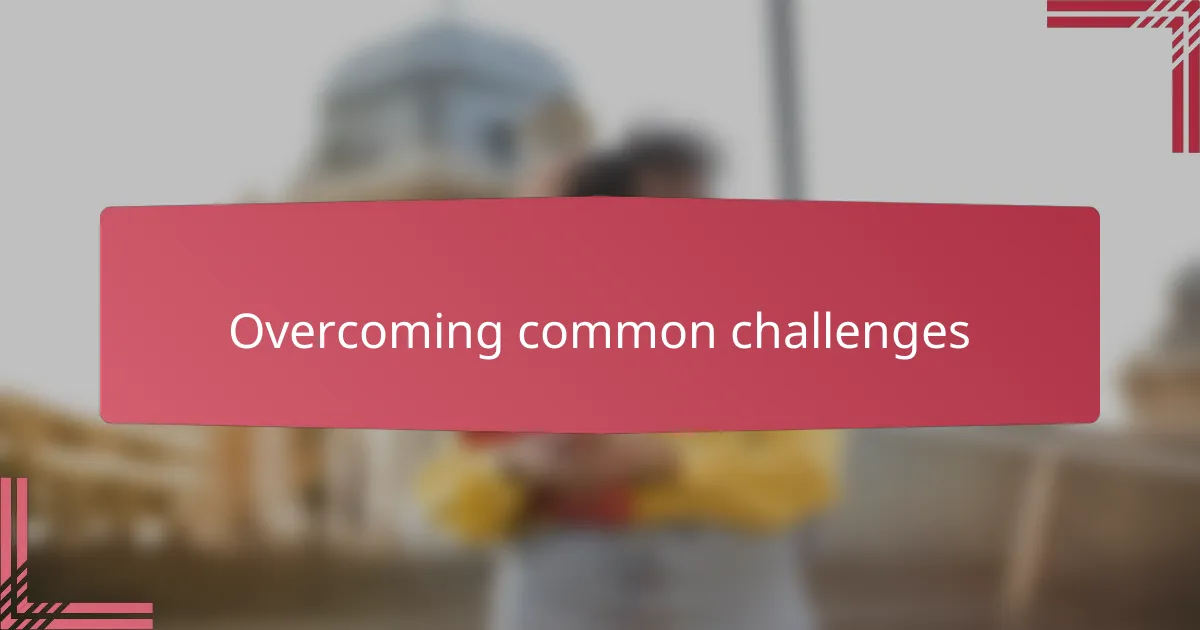
Overcoming common challenges
One challenge I often face is resistance—sometimes students or even fellow teachers hesitate to dive into these exercises. I found that sharing my own vulnerabilities early on breaks the ice and creates space for others to open up. Have you ever noticed how modeling openness lowers walls and invites genuine participation?
Another hurdle is balancing depth with comfort. Push too hard, and people shut down; go too easy, and growth stalls. In my experience, gently pacing the exercises and checking in regularly helps navigate this delicate dance. One time, pausing to simply listen after a tough story made all the difference in keeping trust intact.
Lastly, sustaining engagement over time can be tough. I’ve learned that mixing formats—like pairing storytelling with creative projects—reignites interest and taps different strengths. What’s worked for me is remembering that variety doesn’t just keep things fresh; it respects the diverse ways people build character.
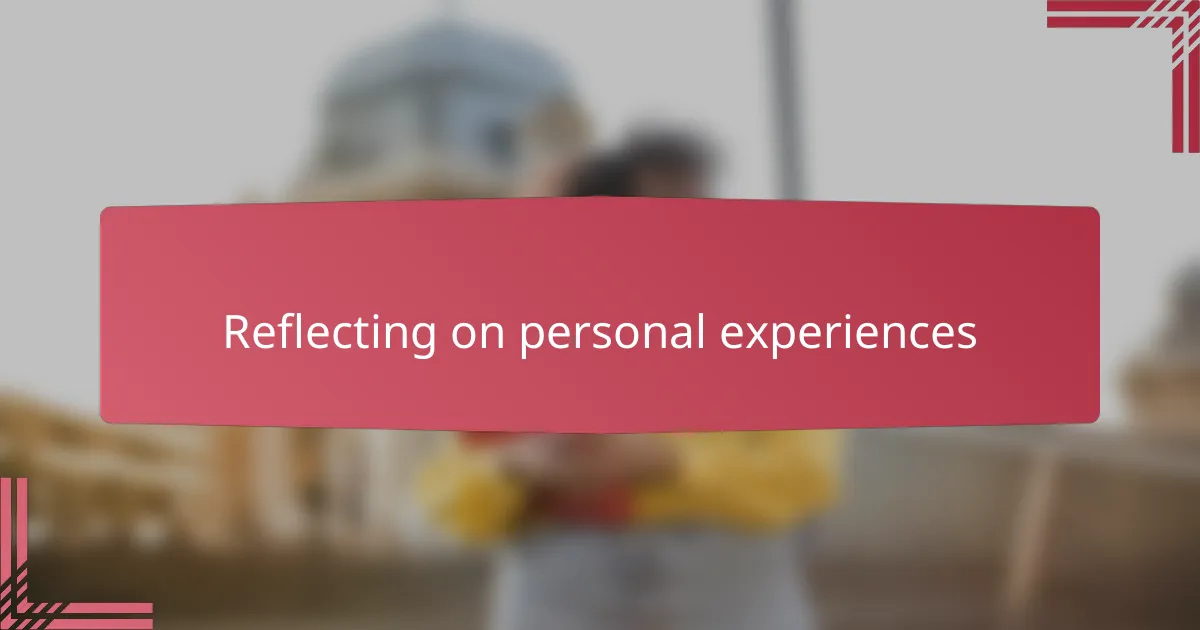
Reflecting on personal experiences
Reflecting on my own journey, I realize how revisiting past character-building exercises often uncovers layers of growth I hadn’t noticed before. Have you ever taken a quiet moment to think back on an activity that once felt awkward but now seems like a turning point? Those reflections bring a sense of gratitude for the discomfort and vulnerability that ultimately sparked change.
Sometimes, reflection reveals more than just personal growth—it sheds light on blind spots I didn’t see at the time. For instance, I once revisited a journal entry from a particularly challenging exercise, only to discover how much my understanding of empathy had deepened since then. It’s amazing how looking backward can feel like moving forward in disguise.
What strikes me most is how these reflective moments aren’t just solitary experiences; they influence how I engage with others and shape the classroom environment. When I share my reflections openly, it invites a deeper kind of connection and trust, reminding me that character-building is as much about community as it is about the self.
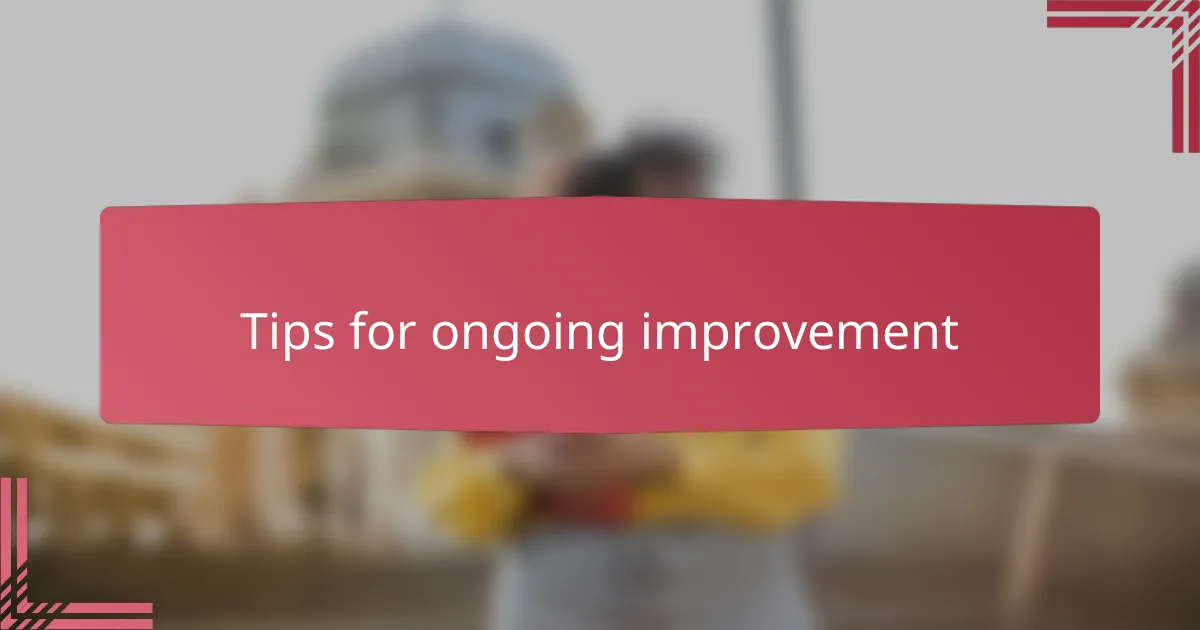
Tips for ongoing improvement
One thing I’ve found invaluable is setting small, achievable goals after each exercise. Why? Because growth doesn’t happen overnight, and acknowledging tiny steps keeps motivation alive. For example, after a session focused on empathy, I challenged myself to listen without interrupting for an entire day—a simple act that felt surprisingly powerful.
It’s also crucial to revisit exercises regularly rather than treating them like one-off tasks. From my experience, returning to the same themes with fresh perspectives helps deepen understanding and reveals new layers of personal growth. Have you noticed how what once felt hard can become easier or more meaningful the second or third time around?
Lastly, I’ve learned to seek feedback from colleagues and students alike. Their insights often highlight blind spots I might miss, and engaging in this dialogue builds a richer, more authentic practice. When others notice your progress—or areas to improve—it creates a supportive loop that encourages ongoing reflection and development. Doesn’t that kind of connection make the journey feel less lonely?